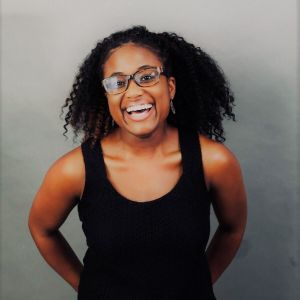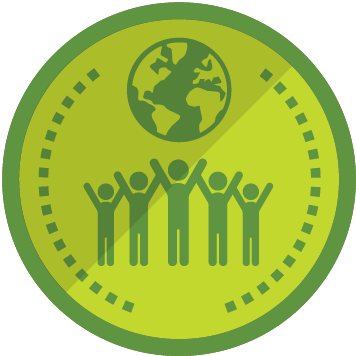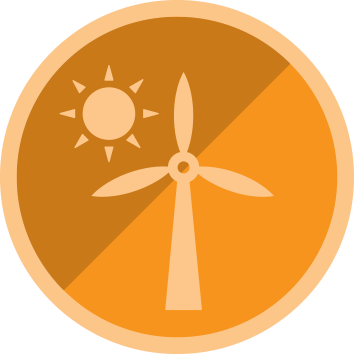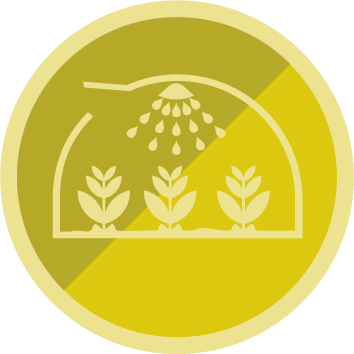
Tiffany Carey
Habitat and Education Coordinator
National Wildlife Federation
Ann Arbor,
Roles at NAAEE
Languages
Interests
Read More
Detroit, MI, United States
Age: 26
Tell us a bit about yourself!
Being raised in Detroit, I developed a keen interest in learning about local vegetation and the various environmental injustices affecting the use and perception of my local parks and green spaces. Unlike many of my peers and colleagues in the ecology field who were enamored with nature because of childhood experiences going to hiking and camping, I was drawn to the environment and its beauty through my passion to make my community a better place.
This curiosity led me to pursue ecological research as an undergraduate at the University of Michigan. There, I created and implemented a 4-year citizen science research project to investigate factors associated with the production of allergenic pollen, common ragweed (ambrosia artemisiifolia), around Detroit’s vacant lot regimes. My experiences in research and community organizing in Baltimore and Detroit opened the door for me to pursue a career that incorporates urban ecology, education and community engagement. I believe that combining these fields not only creates a means for important interdisciplinary conversations, but also an avenue for long-term management solutions.
As the new Habitat and Education Coordinator at the National Wildlife Federation Great Lakes Regional Center, I coordinate and implement local and regional K-12 and habitat projects. Our goal is to provide opportunities for youth to gain an appreciation and understanding for the natural world and interconnectedness of all life. Additionally, I will spearheading the Sacred Grounds program, which aims to connect faith-based communities with environmental stewardship discussions and projects in cities across the Great Lakes region. Outside of work, I am also a member of the Ecological Society of America (ESA) and serve on the Inclusive Ecology Governing Board and the Advisory Board for the ESA’s Strategies for Ecology, Education, Diversity and Sustainability (SEEDS) program. I also am an active alumna for the Brower Youth Award and Earth Stewardship Initiative communities, and continue to organize for the UM-Detroit Bioblitz.
What inspired you to become a champion for the environment and environmental education?
Given my diverse experiences working in academic research, K-12 classrooms, and grassroots organizations, I began to gravitate towards developing skills that would best facilitate and incorporate equitable dialogues across disciplines. As a “Detroiter,” I have been directly affected by City projects that are not always implemented as intended. City projects often fail to live up to their lofty goals to increase community efficacy, connectivity and resilience, which leads to gaps between promises and reality. These missing components to promote equitable and inclusive dialogue, and effective project management, have propelled me into a life of science and activism. I’ve gained skills and strategies to build trust and establish a comprehensive approach to revitalizing green spaces that truly serve community needs.
Throughout this journey, I have experienced emotional fatigue and burn out. However, my vision of elevating the voices of youth and communities has given me an avenue to speak my truth. During my time in Baltimore, Maryland, I served as a Growing Green Initiative Community Organizer. I worked with residents, organizations, developers, and city agencies to determine best possible re-use for “vacant lots” across the city. I got to work with dozens of individuals who wanted to change their neighborhood land parcels to be usable and viable green spaces, helping them achieve their vision by having a transparent dialogue that connected science to grassroots change through greening strategies (e.g. mowing, rain gardens, growing food). Across this scale, I was able to see science in action. Science can be observed, used, and translated in ways to connect with people. It is also a tool that can address local issues and amplify community voices who want to do meaningful work driven by their own traditional knowledge.
This journey keeps me going.
What advice would you give to the next generation of leaders that are looking to bring about positive change in their communities through EE?
Community work is challenging, but the stories and life-changing moments are worth the time and investment! My spark for research, community activism, and environmental justice has led me to pursue a career that aims to connect all people to nature. Additionally, I use my platform of self-love, healing, and passion to help create equitable green spaces in the communities I serve. I hope that these spaces will reenergize the hope and power of the people who have the right to enjoy the beauty of our natural landscapes.
I’d also like to share some strategies for every leader to create inclusive spaces within your work:
- Allow people to talk about their personal lives on their own terms
- It is not someone’s responsibility to teach you about their experiences
- Do not focus on someone’s identity or background
- Create one-on-one discussions that may lead to dramatic shifts in understanding
- Know yourself and how you’ll react in emotionally-charged situations
- You don’t have to know the end before you begin – it’s more important to begin
Who do you look up to as inspiration for your work?
I am still inspired by the 2014 Brower Youth Award cohort, who continue to push boundaries to create communities that are built on the pillars of sustainability, equity, and transformation. We all came together in Berkeley, California, to build on our strengths and equip us for our continued passion to trail blaze environmental change in our communities. We wrapped up by sharing our stories with the Berkeley community, and collaborated with other leaders that advised us on best practices for next steps. These leaders still support and contribute to my vision 4 years later, and they all strive to spark hope and courage in many other young people working through the challenges and successes that come with activism and leadership. I’m grateful for these individuals, and I wouldn’t be where I am today without them.
If you had to live in one place for the rest of your life, where would it be?
Detroit, #PureMichigan, is where I can see myself for the rest of my life. If Mackinac Island fudge, Traverse City cherries and a Detroit Coney dog doesn’t convince someone to stay in this state, then perhaps enjoying the second longest coastline of any U.S. state (behind Alaska) may convince them. Not to mention that Detroit birthed Motown Records and is one of final stops along the legendary Underground Railroad.
Despite these fun facts, Detroit is my home. I have worked in many places, and I can say that my roots and heart belong in Detroit. My greatest failures, most significant triumphs, longest cries, and biggest smiles all occurred in this city. I’ve chosen to serve and see the harvests of my labor, but also to work alongside the people and communities who have given their lives to see a better Detroit. I have had the honor to work alongside the most resilient people in the world, and for that I am grateful and blessed.
User Activity
No activity yet.



